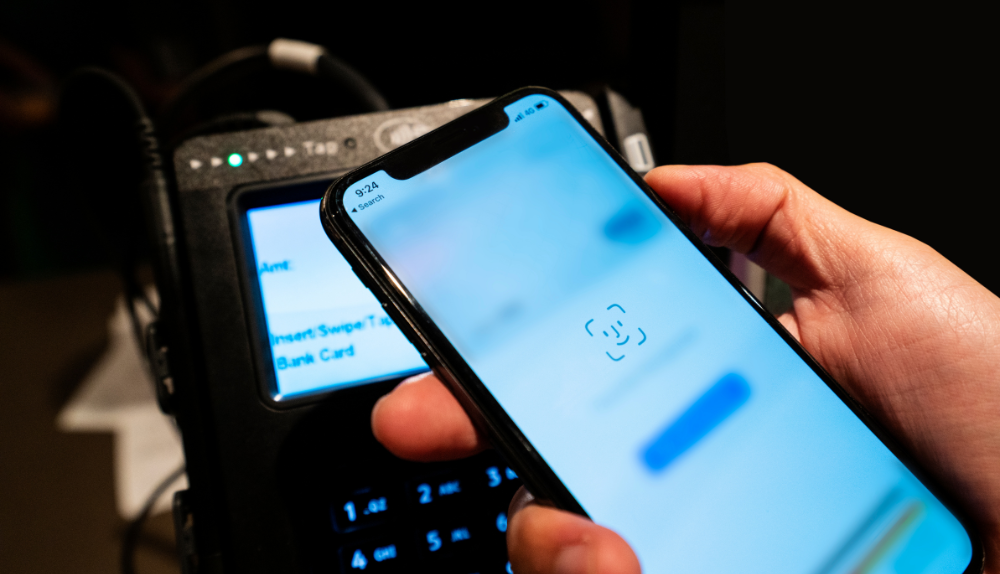
By max July 12, 2023
Payment technology has evolved rapidly in the last few years, making it easy for merchants to accept credit/debit card payments. For those who want the convenience of accepting card payments at any time and anywhere, a mobile card reader is a necessity. These are small, portable devices that get connected to your smartphones and turn them into card readers.
While there are many ways of accepting credit card payments, this one is an ideal choice for those planning to expand their business to a broader market. In this post, we will walk you through the step-by-step guide for setting up ways to accept credit card payments on your smartphone.
How Credit Card Processing Works?

Regardless of the method you choose to accept card payments, the steps involved in executing these transactions are the same in all cases. Here’s how card transactions are processed.
- The customer will either swipe the credit card at your point-of-sale system or input their card details manually on your checkout page online.
- The merchant’s payment gateway verifies the information and sends it to the payment processor for further validation. The payment processor or your acquiring bank will communicate the details with the customer’s issuing bank to ensure they have sufficient balance to process the transaction.
- Once the issuing bank approves the transaction, the requested amount is debited from the customer’s account and credited to the merchant’s bank account.
Still, there are different ways to accept credit/debit card transactions. The difference lies in how you input the card details. To help you understand the ways to accept mobile card payments, we are going to explore other methods of accepting cards first. Let’s take a look.
Different Ways to Accept Card Payments

For those who do not use mobile card readers for credit card transactions, there are other methods to execute these transactions. We’ve listed them below.
In-store Payment Processing
You have seen POS (point-of-sale) units at restaurants, grocery stores, and other retail stores. These are commonly used to accept in-store card payments through the credit card terminal. You can use them to process cash and credit card transactions flawlessly. They swipe the card at the POS or manually enter the PIN to authorize the transaction. They might also use QR scanning to complete the transaction. Once the payment is processed, the merchant issues a receipt and marks the transaction as successful.
Online Payments
eCommerce businesses need to integrate a payment service provider with their online stores to facilitate seamless payment processing. You can either use the built-in payment services of the eCommerce marketplace or integrate a third-party payment gateway, like PayPal, into your website. That can be a little tedious. Not only the setup part, but it seems inconvenient to the customers as they are directed to a third-party payment gateway to process the payment.
Mobile Payment Processing
Finally, you can integrate a card reader with your smartphone to accept credit card payments on the go. This requires no other major equipment. Square is a popular mobile payment processor that comes with a small card reader, which can be connected to your phone through the headphone jack.
A merchant has to install the app on their Android or iOS device, enter the customer’s total, and swipe their credit card to complete the transaction. It works like the POS system at your retail store, except it doesn’t require hardware other than a smartphone. Let’s check out the steps for accepting credit card payments on your smartphone.
Steps To Accept Credit Card Payments On Your Smartphone

Step 1: Sign up for a Merchant Account
Each transaction is verified by your payment processor, the card network, and the issuing bank before the merchant receives the payment. For that, you need a merchant account through which all credit and debit card transactions can be processed. If you don’t already have one, consider signing up for a merchant account with a payment processor.
Step 2: Select Transaction Method
You can choose from different methods for accepting payments through your smartphone. Here are your options.
- A Virtual Terminal: With a virtual terminal, the customer has to enter their credit card details manually on the smartphone. That, however, is inconvenient and not a safe way to process card payments. It’s a good choice for merchants that rarely accept credit card payments or are using it as a backup.
- Use a Mobile Reader: This is the only additional hardware piece you need to process credit card transactions on a smartphone. You can either plug it into the mobile or connect it through Bluetooth. The only condition is that your device must be connected to the card reader in order to accept credit card transactions. Moreover, you must have an internet connection unless your payment app works in offline mode.
- QR Code or a Payment Link: Other methods for accepting mobile credit card payments are through QR codes and payment links. You don’t need a card reader if you are accepting payments through either of these methods. For that, you need to send your customers a QR code or a payment link through which they can transfer the payment to your account. This method is comparatively costlier and less secure than a card reader since it’s counted in card-not-present transactions.
Step 3: Payment Processing
You can swipe or tap the card if you are using a card reader. For those using a virtual terminal, you need to manually enter the card details in the given fields within the payment app. If you have enabled the QR code, show it to your customer so they can scan the code to get to your payment page. If you are using links, send the link to your customer.
An Overview of Mobile Card Readers
You can transform your smartphone into a card reader through a portable, plug-in mobile card reader. They can be attached to your smartphone through a compatible port. There are three types of card readers you can try. Magstripe, for instance, requires customers to swipe the card. It reads the card’s magnetic stripe. It’s not a secure card reader, though. You can use EMV readers, which collect your card information through EMV chips.
The chips are inserted into the card reader, which then collects your credit card information. The most commonly used and one of the safest forms of card reader is NFC. Google Pay, Apple Pay, and other digital wallets are examples of NFC card readers. It’s a contactless payment option, which enables customers to transfer the payment securely to the merchant.
Benefits of Mobile Card Payments
Mobile card readers are a convenient and secure payment option for freelancers and small businesses. For people who accept payments on the go, it’s easier to carry a smartphone instead of a heavy POS terminal around. Let’s check out a few common benefits of mobile card payments.
Convenience: The first one is obvious. You do not need to carry any heavy-duty POS terminal to accept credit card payments. It’s convenient for both merchants and customers. It facilitates transactions on the go, i.e. anytime and anywhere.
Cheaper: A mobile card reader is cheaper than a POS terminal, which costs a few hundred dollars in setup. Some payment processors offer card readers for free. You just need to choose a payment processor, sign up for a merchant account with them, choose a convenient payment processing method, and download the app.
Seamless Integration: It’s also known for its seamless integration option. A mobile card reader is hardware that can be plugged into your smartphone through any compatible port. Besides that, you need to download the payment application and you are good to go. It’s much better than those heavy-duty terminals, which need a complex setup. There’s little to no installation required with card readers. You can start accepting payments once you have the reader attached to your device and the software downloaded on your phone.
The cost of installing a POS system can range anywhere between $500 and $5000. Small businesses that do not have the capital to install such an expensive unit for payment processing can rely on mobile card readers. You can even skip the card readers by using QR scanning or payment links.
Is It Secure?
Mobile payments are secure, but QR scanning and payment links are not the safest options. These are considered card-not-present transactions, which carry an increased risk of fraudulent activities. Someone could steal a card and misuse it to process a transaction. Fortunately, that can be prevented with an address verification system and other security protocols.
Bottom Line
Accepting card payments through mobile is just a three-step process. Open a merchant account with the payment processor, get the card reader, and install the app for accepting payments. It offers a host of benefits. You can save significantly on the terminal installation cost. Besides, you offer convenience to your customers to transfer payment online. It’s also convenient for the merchant to accept card payments. To make it easier, you can work with a payment service provider who will help you choose a reliable payment processor and the best software for accepting card payments through mobile.
